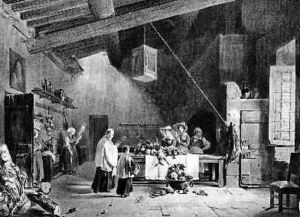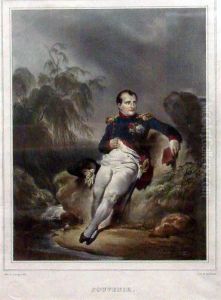Marin-Lavigne, Louis Stanislas Paintings
Louis Stanislas Marin-Lavigne was a French engraver born in 1797 in Paris, France. Over the course of his life, he developed a significant reputation for his work in the field of engraving, contributing to the rich artistic tapestry of 19th-century France. Marin-Lavigne's education and early career were deeply rooted in the vibrant artistic culture of Paris, where he was exposed to both classical and contemporary art forms. His work was influenced by the Romantic movement, which was prevalent during his formative years, as well as by the classical traditions that continued to dominate French art.
Marin-Lavigne is particularly noted for his skill in both line engraving and lithography. He was adept at capturing the nuance of paintings and translating these details into engravings that could be widely reproduced. This skill made him an important figure in the dissemination of artistic images during a time when access to original artworks was limited for the general population.
Throughout his career, Marin-Lavigne collaborated with numerous artists, producing engravings based on their paintings. These collaborations were instrumental in bringing the works of contemporary painters to a broader audience, thereby playing a crucial role in the art world of his time. His engravings covered a wide range of subjects, from portraits and historical scenes to landscapes and genre scenes, showcasing his versatility and keen eye for detail.
Marin-Lavigne's contributions to the art of engraving were widely acknowledged by his contemporaries. He participated in several exhibitions, earning recognition and awards for his technical skill and artistic sensitivity. His works were collected by art enthusiasts and institutions alike, cementing his reputation as a master engraver.
Louis Stanislas Marin-Lavigne's legacy lives on through his engravings, which continue to be studied and admired for their craftsmanship and historical value. He passed away in 1860, leaving behind a body of work that remains a testament to his skill and dedication to the art of engraving. Through his efforts, Marin-Lavigne played a significant role in the 19th-century art scene, contributing to the proliferation of art and the exchange of artistic ideas across Europe.

